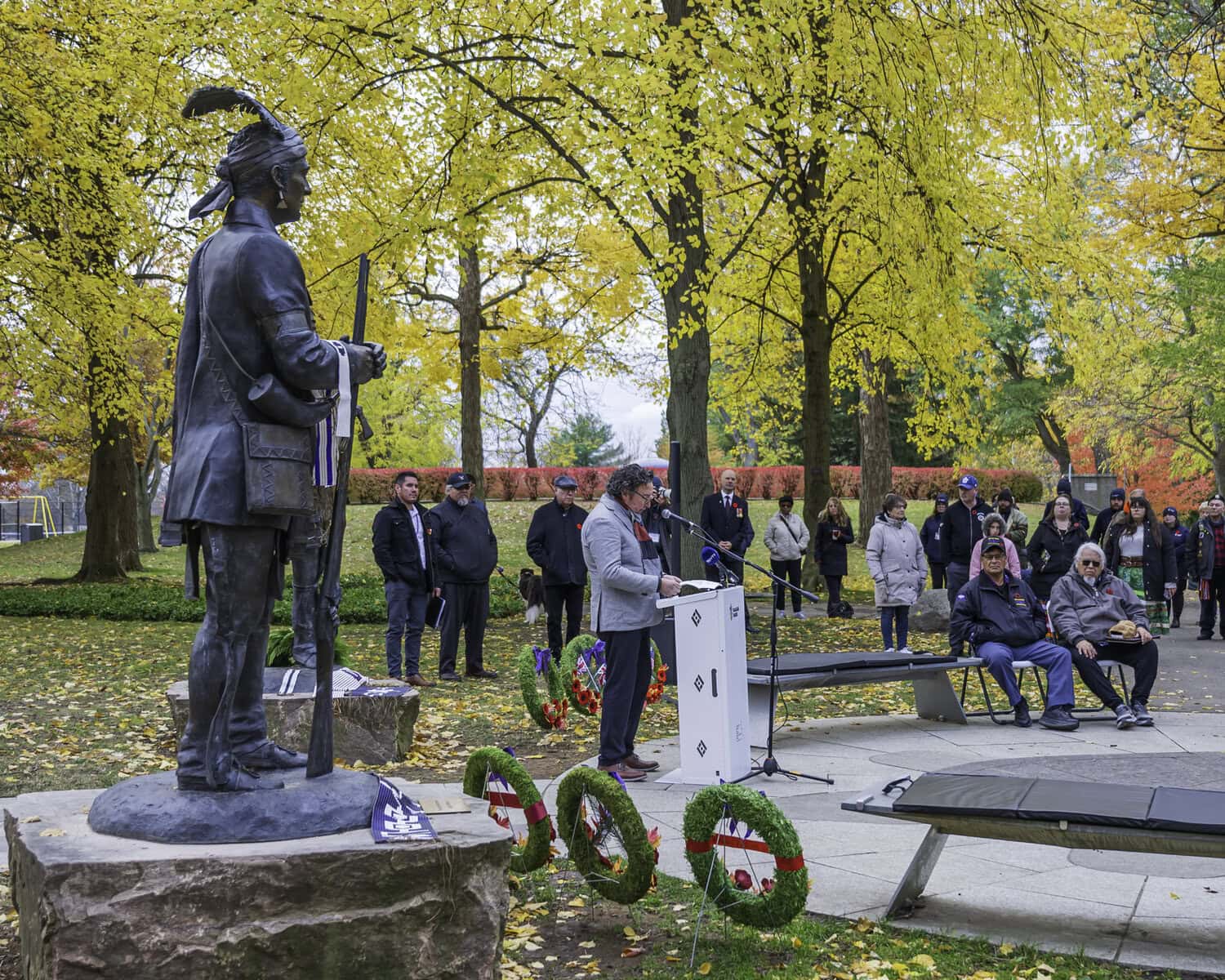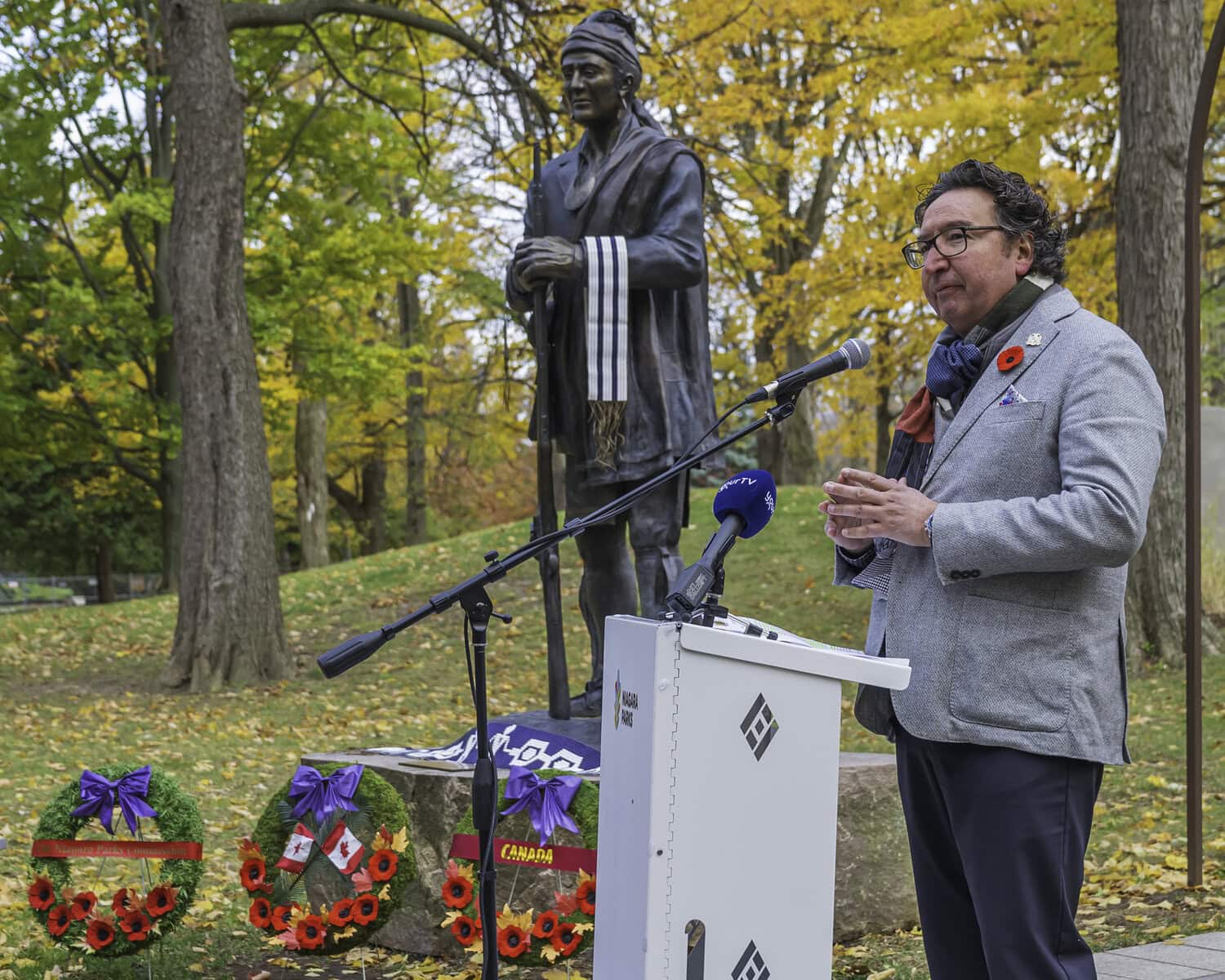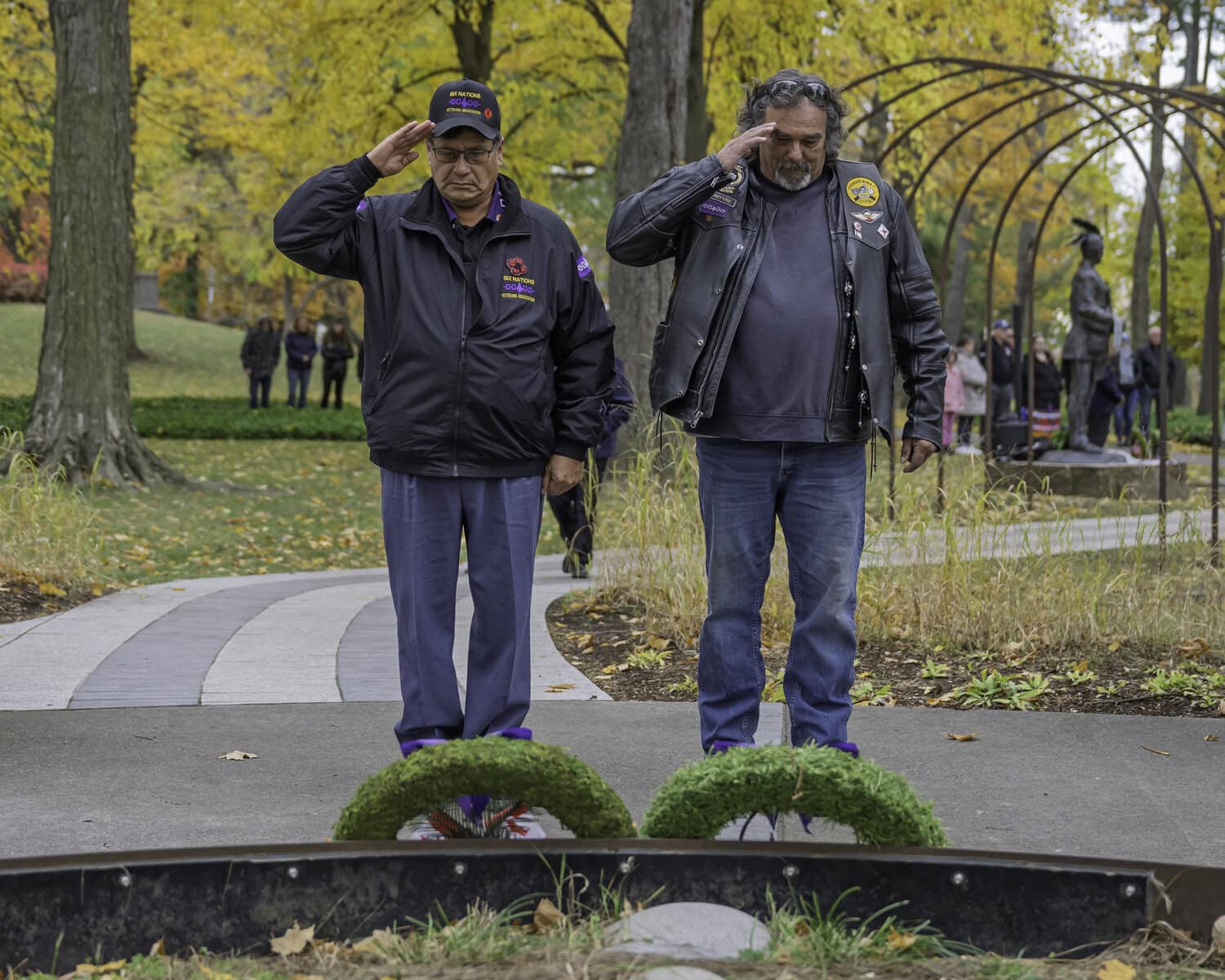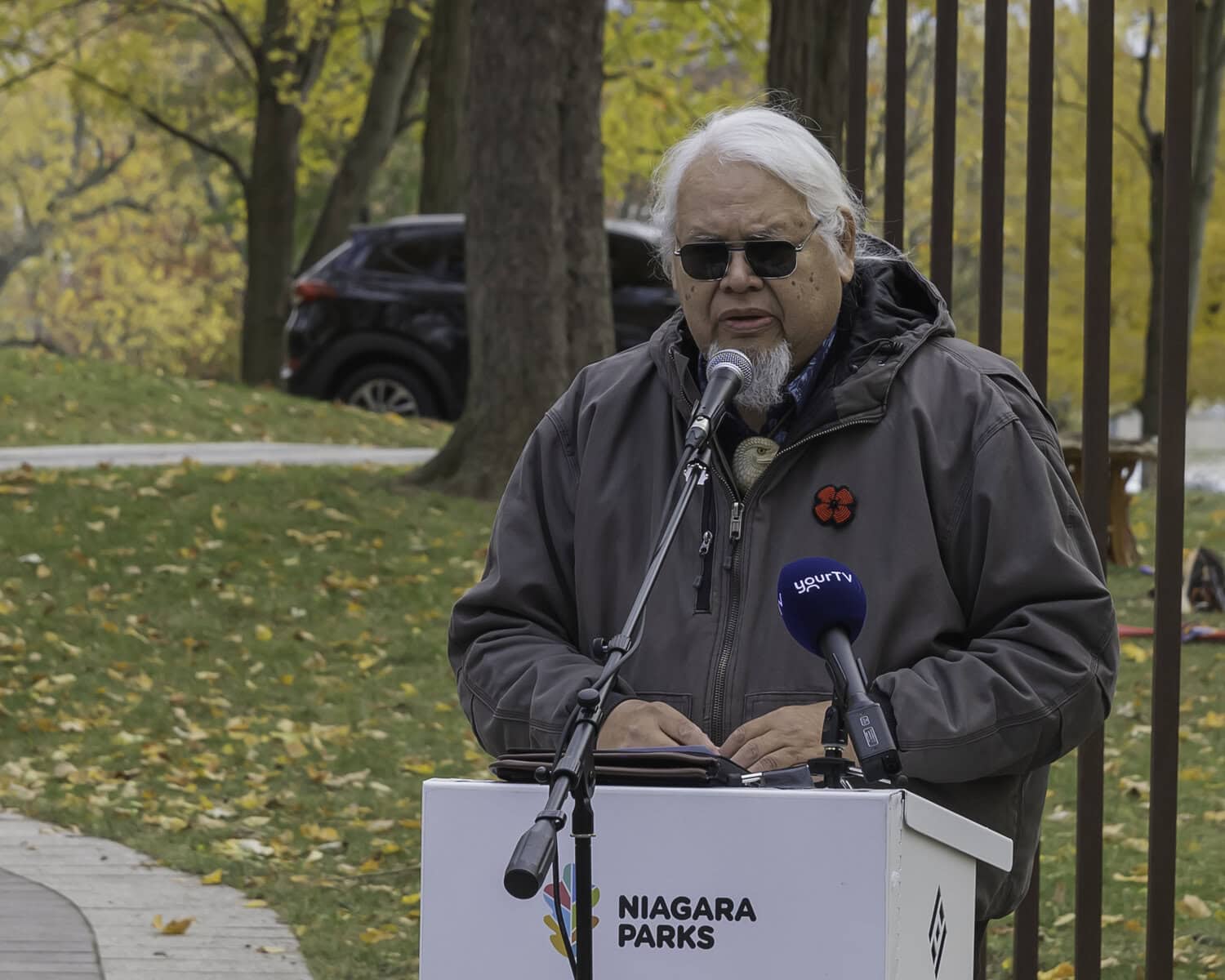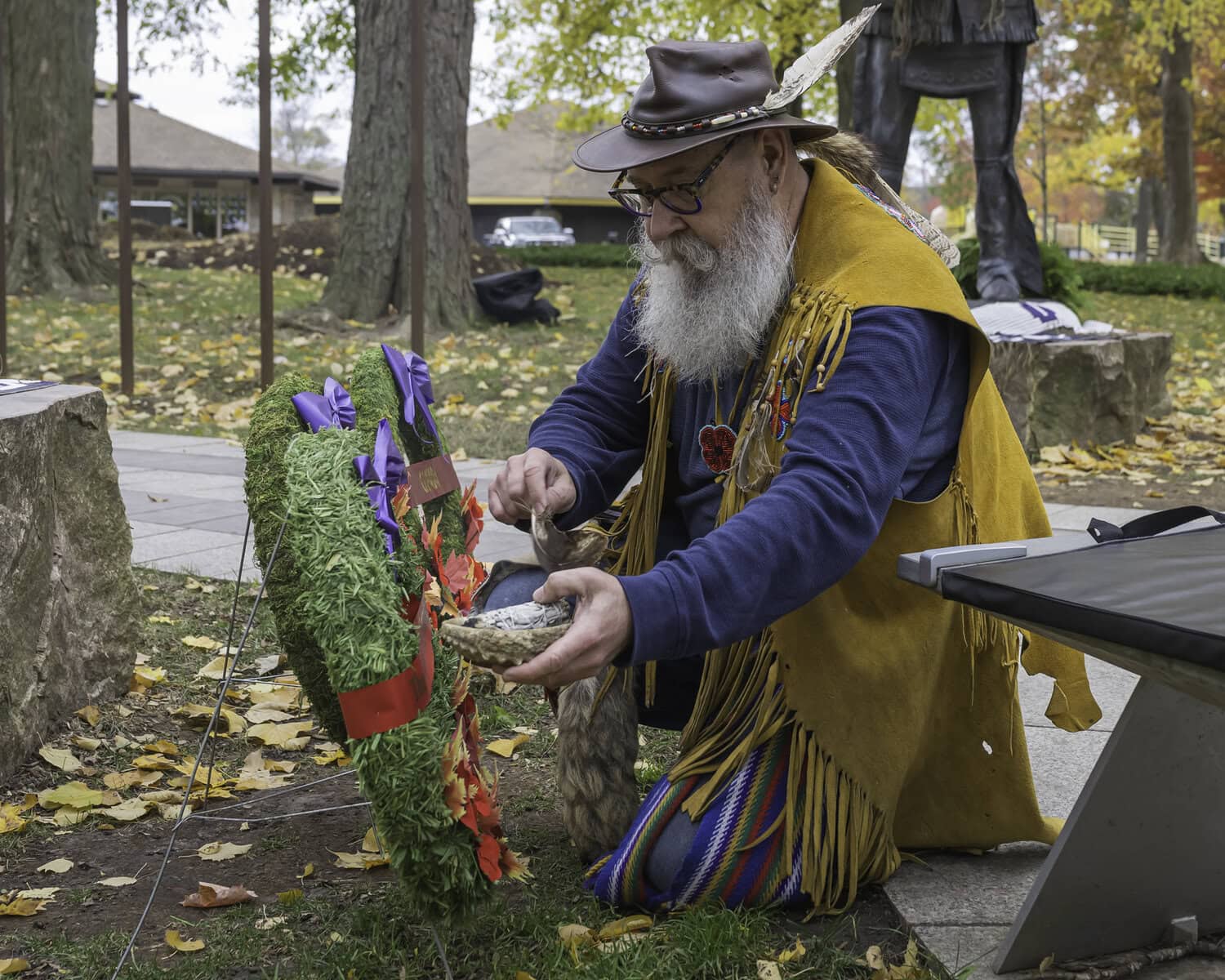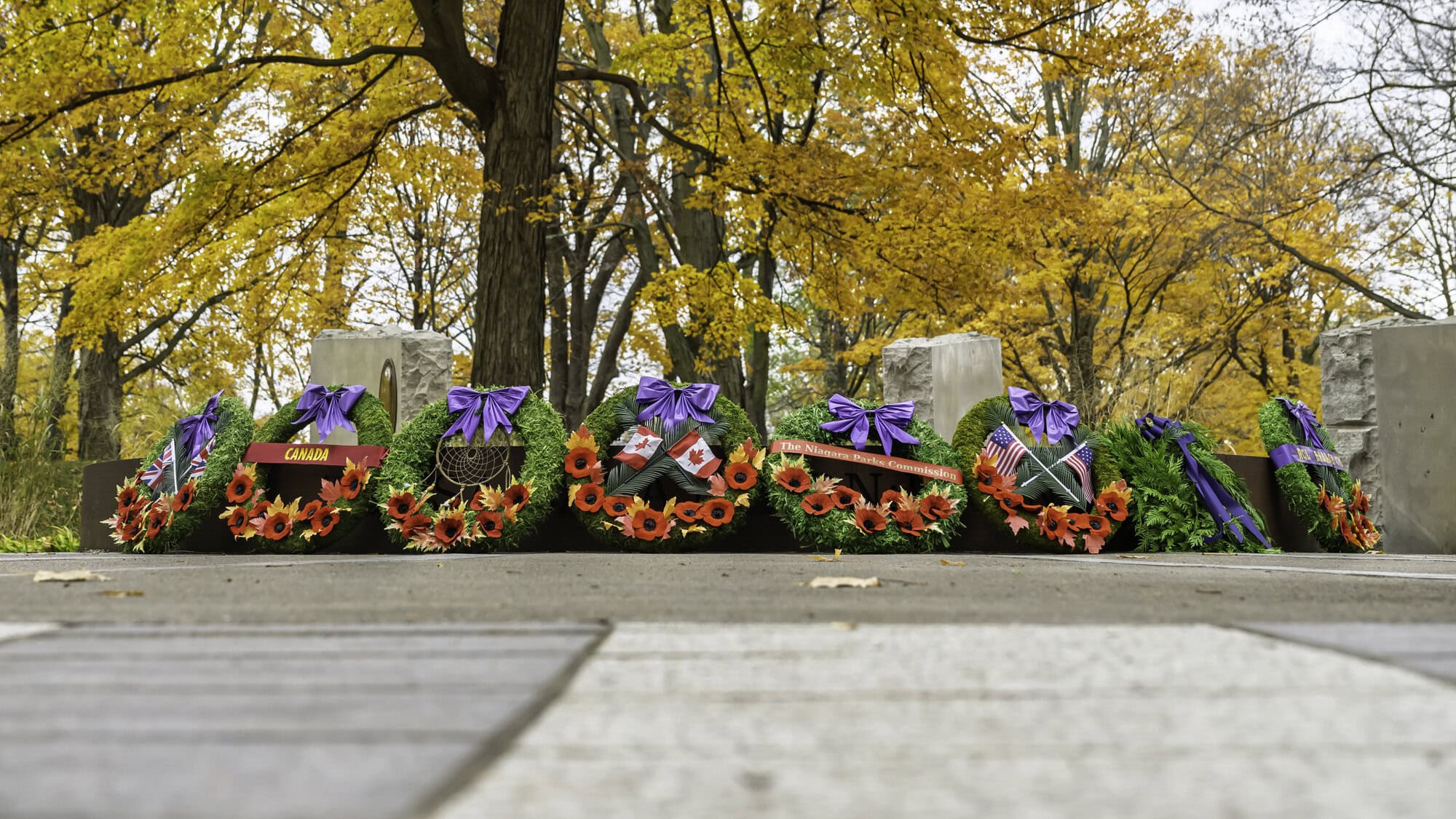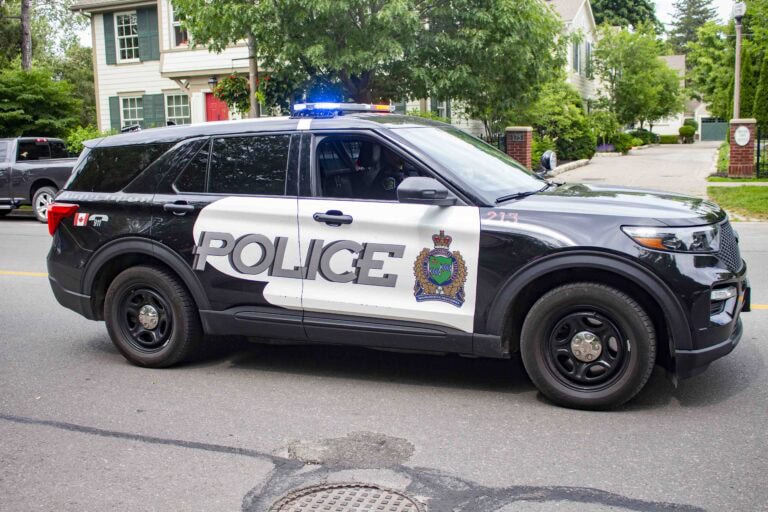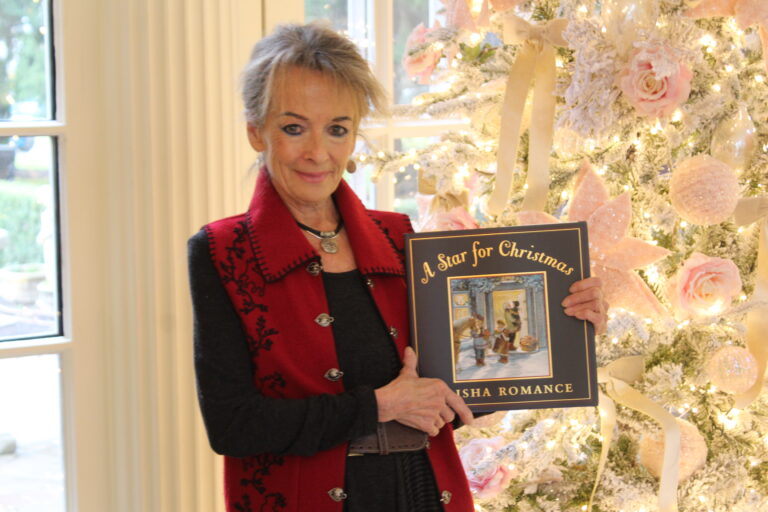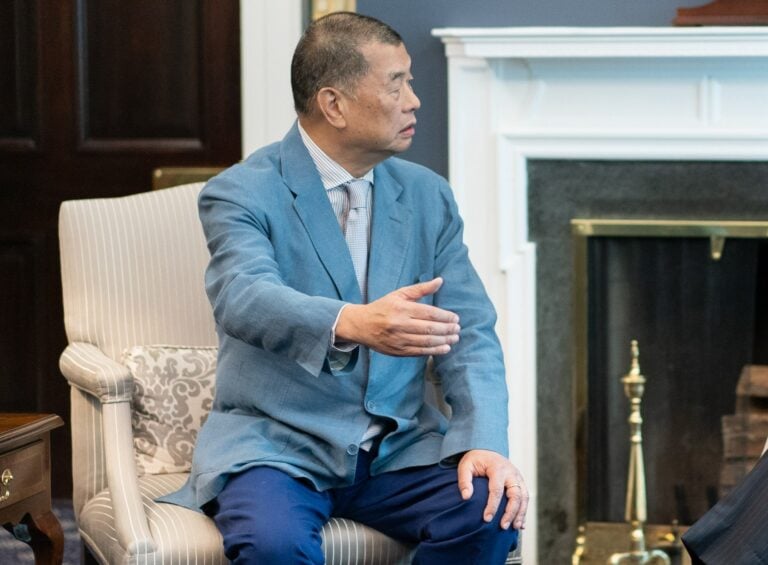When it comes to the role that Indigenous peoples had in some of Canada’s most significant battles, Crystal Haverstock says many Canadians are only beginning now to grasp the depth of their military service.
Haverstock, from the Royal Canadian Legion Branch 124, was one of several people who spoke at the Valour and Victory Indigenous Remembrance Day ceremony, which saw its largest crowd yet gather at the Landscape of Nations Memorial in Queenston Heights to honour Indigenous veterans.
The seventh annual ceremony, held on Nov. 8, recognized the bravery and service of Indigenous peoples in conflicts from the War of 1812 to modern times with drumming and statements from local Indigenous and civic leaders.
“A lot of the general public does not understand the part that the Indigenous played in war since 1812,” Haverstock said. “They fought alongside everyone else, and they had specific skills that nobody else had.”
She is also a Mohawk of the Bay of Quinte who traces her lineage to Joseph and John Brant, whose statues are prominent parts of the Landscape of Nations Memorial.
The ceremony featured fire keeper Brian Kon of the Métis Nation, who tended the sacred flame through the cold afternoon.
“Indigenous people have been among the first to sign up whenever there was a world conflict, to serve and protect the land that was theirs,” said Kon.
He said remembrance also means confronting the exclusion that Indigenous veterans faced when they returned home.
“They couldn’t go into legions or participate in the ceremonies. It was only in the last couple of decades that Indigenous people were even allowed to lay wreaths at national monuments,” said Kon.
Unlike the sombre tone in typical Nov. 11 ceremonies, Kon said Indigenous Veterans Day usually features traditional drumming and singing to honour one’s ancestry.
Rick Hill, Haudenosaunee historian and knowledge specialist at the First Nation Technical Institute, gave the keynote address and connected the day’s purpose to his family memory and the collective freedom of all Canadians. He said his grandfather fought in the First World War and his father in the Second World War.
“I stand here today to honour the countless number of my ancestors and their allies who did the very things that I could not do,” he said. “They fought so that you and I could live free.”
Tim Johnson, president of the Niagara Academy for Indigenous Relations and co-chair of the Landscape of Nations memorial, reminded the crowd that the site itself was built to preserve authentic Indigenous storytelling and ensure it is “protected from appropriation and guided by authenticity.”
Haudenosaunee knowledge keeper Karl Dockstader opened and closed the ceremony with the thanksgiving address, calling on the community to think beyond one generation.
“I’d like to think that somebody stood here 50 years ago, and 500 years ago, and 5,000 years ago, offering something like this thanksgiving address,” said Dockstader.
Indigenous veterans Rick Miller and David McIntyre were honoured for their military service.
Miller, a Turtle Clan member from Six Nations and paratrooper with the Princess Patricia’s Canadian Light Infantry, reflected on his roots and how his Indigenous identity has guided his life.
“That’s what made me jump out of that plane,” said Miller.
Organizers expect next year’s Valour and Victory to draw an even larger gathering as awareness continues to grow.



